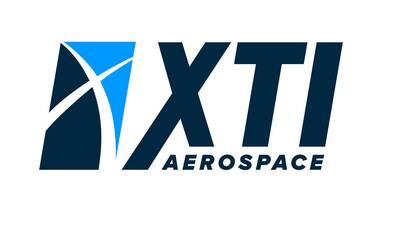Defense Market in US to Grow by USD 169.43 Billion (2024-2028), Boosted by Rising Demand for Unmanned Aerial Vehicles, AI Redefining Market Landscape – Technavio
NEW YORK, Feb. 7, 2025 /PRNewswire/ — Report with market evolution powered by AI – The defense market in us size is estimated to grow by USD 169.43 billion from 2024-2028, according to Technavio. The market is estimated to grow at a CAGR of 4.91% during the forecast period. Increase in demand for unmanned aerial vehicles in US is driving market growth, with a trend towards increase in technological innovation in defense industry. However, shortage of skilled labor in defense industry in US poses a challenge. Key market players include Airbus SE, BAE Systems Plc, Elbit Systems Ltd., General Dynamics Corp., General Electric Co., General Motors Co., Honeywell International Inc., Huntington Ingalls Industries Inc., Kongsberg Gruppen ASA, L3Harris Technologies Inc., Lockheed Martin Corp., Neo Tech Inc., Northrop Grumman Corp., Oshkosh Corp., Polaris Inc., QinetiQ Ltd., Revision Military, RTX Corp., Safeguard, Smith and Wesson Brands Inc., Textron Inc., Thales Group, and The Boeing Co.
Key insights into market evolution with AI-powered analysis. Explore trends, segmentation, and growth drivers- View Free Sample PDF
Defense Market In US Scope | |
Report Coverage | Details |
Base year | 2023 |
Historic period | 2018 – 2022 |
Forecast period | 2024-2028 |
Growth momentum & CAGR | Accelerate at a CAGR of 4.91% |
Market growth 2024-2028 | USD 169.43 billion |
Market structure | Fragmented |
YoY growth 2022-2023 (%) | 4.47 |
Regional analysis | US |
Performing market contribution | North America at 100% |
Key countries | US and North America |
Key companies profiled | Airbus SE, BAE Systems Plc, Elbit Systems Ltd., General Dynamics Corp., General Electric Co., General Motors Co., Honeywell International Inc., Huntington Ingalls Industries Inc., Kongsberg Gruppen ASA, L3Harris Technologies Inc., Lockheed Martin Corp., Neo Tech Inc., Northrop Grumman Corp., Oshkosh Corp., Polaris Inc., QinetiQ Ltd., Revision Military, RTX Corp., Safeguard, Smith and Wesson Brands Inc., Textron Inc., Thales Group, and The Boeing Co |
Market Driver
The US defense market is witnessing significant trends in military expenditures, with the President’s budget request for FY2022 proposing a large defense budget. Key areas of focus include helicopters, space capabilities, and advanced aircraft. FDI investors are showing increased interest, driven by strategic resources and changing regulations. The Space Force and counterterrorism efforts are major priorities, with upgrades to satellites and defense contracts for space capabilities. The Navy and Army are modernizing with new technology, such as autonomous fighter jets and unmanned combat vehicles. The risk of terrorism necessitates continued investment in intelligence capabilities, operational bases, and military communications for seamless connectivity and intelligence sharing. The defense market size is expected to grow, with major competitors driving revenues and market shares. The Global Market Model uses macroeconomic indicators and market intelligence platforms to analyze supply-demand gaps and provide company research, market research, and consumer research. Air-based and sea-based defense, as well as support and auxiliary services, are in high demand, with contracts for radar, sonars, overhaul services, and defense support. Emerging threats require ongoing military modernization, with technology advancements in areas such as artificial intelligence and design upgradations.
The defense market in the US is driven by technological innovation, with significant contributions from government investment and industry collaboration. Advanced aircraft designs are a key focus, prioritizing fuel efficiency, emissions reduction, aerodynamic enhancement, and increased performance. Technological advancements include improved aircraft designs, autonomous technologies, and advanced sensor systems. Innovative solutions, such as additive manufacturing and energy-efficient propulsion systems, address evolving customer needs and defense challenges. These advancements enable defense platforms to complete missions more efficiently, increasing demand for related products and services.
Request Sample of our comprehensive report now to stay ahead in the AI-driven market evolution!
Market Challenges
- The US defense market is a large and contemporary market with significant military expenditures, driven by strategic imperatives and the need to address emerging threats. The defense budget, which includes budget authority for the Army, Air Force, Navy, and other branches, is a major driver of revenue for companies in this sector. Challenges include changing regulations, upgrading contracts for advanced aircraft, satellites, and helicopters, and countering the risk of terrorism through counterterrorism efforts. FDI investors are attracted to the US defense market due to its strategic resources and intelligence capabilities. Key areas of focus include Air-based and Sea-based defense, with demand for fighter aircrafts, military helicopters, battle force ships, aircraft carriers, frigates, destroyers, corvettes, torpedo boats, support crafts, submarines, and nuclear submarines. Additionally, there is growing interest in autonomous fighter jets, unmanned combat vehicles, and technology advancements such as artificial intelligence and design upgradations. The defense market size is significant, with major competitors vying for market share. Macroeconomic indicators and market intelligence platforms provide valuable insights into market trends, consumer research, and supply-demand gaps. Defense contracts for overhaul services, auxiliary equipment, radar, sonars, and defense support are also key areas of opportunity. The evolving security landscape and external security threats continue to shape the market dynamics.
- The US defense market may face challenges due to a shortage of skilled workers, including engineers, technicians, and researchers. This labor shortage limits defense companies’ ability to innovate and develop new technologies, causing delays in project timelines for defense programs. These delays result in increased costs for product development, testing, and deployment, potentially hindering market growth. The high demand for skilled labor in the defense sector also leads to increased labor costs as companies compete for talent. Addressing this labor shortage through workforce development initiatives and partnerships with educational institutions could help mitigate these challenges and support the growth of the US defense market.
Discover how AI is revolutionizing market trends- Get your access now!
Segment Overview
This defense market in US report extensively covers market segmentation by
- Type
- Manual Defense Equipment
- Autonomous Defense Equipment
- Platform
- Airborne
- Land
- Naval
- End-user
- Military
- Government Agencies
- Defense Contractors
- Geography
- North America
1.1 Manual defense equipment- Manual defense equipment refers to military hardware, tools, and devices that are manually operated by personnel without automation or electronic systems. This equipment includes a diverse range of applications in the US defense sector, such as small arms and infantry weapons, personal protective equipment (PPE), handheld communication devices, field engineering tools, and medical kits and first aid supplies. Infantry forces utilize manual defense equipment like rifles, handguns, machine guns, grenades, and rocket launchers to engage enemy targets, provide suppressive fire, and defend ground positions. PPE, including helmets, body armor, ballistic vests, and gas masks, protects military personnel from physical harm, ballistic threats, chemical agents, and environmental hazards during combat operations. Handheld communication devices, such as radios, walkie-talkies, and signaling devices, enable soldiers to communicate, coordinate movements, and receive orders from command units in the field. Combat engineers and support personnel use manual tools like shovels, axes, wire cutters, entrenching tools, and demolition charges for construction, fortification, obstacle clearance, and IED disposal. Medical kits and first aid supplies, including first aid kits, tourniquets, bandages, and field surgical instruments, are essential for providing emergency medical care, trauma treatment, and casualty evacuation in combat situations. Prominent suppliers of manual defense equipment to the US military include Smith & Wesson Brands Inc., which manufactures handguns, rifles, and other small arms for military and law enforcement use, Revision Military, which produces protective eyewear, helmets, and integrated head protection systems for military and law enforcement applications, and Combat Medical (Safeguard), a supplier of tactical medical kits, trauma supplies, and casualty evacuation equipment for the military and first responders. These vendors play a crucial role in supplying manual defense equipment to support the US military’s operational needs and mission requirements, ensuring military personnel’s readiness, effectiveness, and survivability during defense operations. Consequently, the manual segment is expected to grow in the defense market in the US during the forecast period.
Download a Sample of our comprehensive report today to discover how AI-driven innovations are reshaping competitive dynamics
Research Analysis
The Defense Market in the US is characterized by significant military expenditure, with the defense budget consistently ranking among the largest in the world. The President’s budget request sets the tone for annual defense spending, which is influenced by macroeconomic indicators, emerging threats, and changing regulations. The market includes various segments such as helicopters, advanced aircraft, battle force ships, aircraft carriers, radar, sonars, overhaul services, defense support, auxiliary equipment, and fighter aircrafts. FDI investors play a crucial role in the market, particularly in the production of military helicopters and space capabilities. The Space Force, a new branch of the US military, is driving demand for advanced space technologies. The market is influenced by supply and demand dynamics, with key areas of focus including sonar systems, radar technology, and overhaul services for fighter aircrafts and military helicopters. Market intelligence platform is essential for staying informed about the latest trends, regulations, and opportunities in this dynamic industry.
Market Research Overview
The Defense Market in the US is driven by large defense budgets, with defense expenditures reaching over USD700 billion in the President’s budget request for 2022. Military expenditures are influenced by strategic imperatives, emerging threats, and changing regulations. Key areas of focus include helicopters, space capabilities, and advanced aircraft. FDI investors are increasingly involved in defense, particularly in areas like space and advanced technology. The US Space Force and Navy are major consumers of defense contracts, with a growing emphasis on counterterrorism efforts and intelligence capabilities. The risk of terrorism and evolving security threats continue to be significant drivers for defense spending. Defense contracts cover a range of areas, from Air-based defense and Sea-based defense to Support and auxiliary equipment, Radar, Sonars, Overhaul services, and Defense support. Major competitors include other global powers, and market intelligence platforms provide valuable insights into revenues, market shares, and supply-demand gaps. Technology advancements, such as autonomous fighter jets, unmanned combat vehicles, and military drones, are transforming the defense landscape. Artificial intelligence and design upgradations are also key areas of investment. External security threats, military modernization, and operational bases remain strategic imperatives for the US defense industry. Military communications and deployable networking are essential for seamless connectivity and intelligence sharing. Emerging threats, such as cyberattacks and hybrid warfare, are driving the need for advanced intelligence capabilities and countermeasures. The defense market size is expected to grow significantly in the coming years, with major drivers including military helicopters, military modernization, and the need for advanced technology. Macroeconomic indicators, such as low-interest rates, are also favorable for defense spending. Overall, the US Defense Market is a large and complex industry, with a diverse range of players and offerings. Understanding the market dynamics, including drivers and restraints, is essential for companies looking to succeed in this sector.
Table of Contents:
1 Executive Summary
2 Market Landscape
3 Market Sizing
4 Historic Market Size
5 Five Forces Analysis
6 Market Segmentation
- Type
- Manual Defense Equipment
- Autonomous Defense Equipment
- Platform
- Airborne
- Land
- Naval
- End-user
- Military
- Government Agencies
- Defense Contractors
- Geography
- North America
7 Customer Landscape
8 Geographic Landscape
9 Drivers, Challenges, and Trends
10 Company Landscape
11 Company Analysis
12 Appendix
About Technavio
Technavio is a leading global technology research and advisory company. Their research and analysis focuses on emerging market trends and provides actionable insights to help businesses identify market opportunities and develop effective strategies to optimize their market positions.
With over 500 specialized analysts, Technavio’s report library consists of more than 17,000 reports and counting, covering 800 technologies, spanning across 50 countries. Their client base consists of enterprises of all sizes, including more than 100 Fortune 500 companies. This growing client base relies on Technavio’s comprehensive coverage, extensive research, and actionable market insights to identify opportunities in existing and potential markets and assess their competitive positions within changing market scenarios.
Contacts
Technavio Research
Jesse Maida
Media & Marketing Executive
US: +1 844 364 1100
UK: +44 203 893 3200
Email: [email protected]
Website: www.technavio.com/
![]() View original content to download multimedia:https://www.prnewswire.com/news-releases/defense-market-in-us-to-grow-by-usd-169-43-billion-2024-2028-boosted-by-rising-demand-for-unmanned-aerial-vehicles-ai-redefining-market-landscape—technavio-302370201.html
View original content to download multimedia:https://www.prnewswire.com/news-releases/defense-market-in-us-to-grow-by-usd-169-43-billion-2024-2028-boosted-by-rising-demand-for-unmanned-aerial-vehicles-ai-redefining-market-landscape—technavio-302370201.html
SOURCE Technavio





 Private Internet Access gives you unparalleled access to thousands
of next-gen servers in over 83 countries and each US state. Your
VPN experience will always be fast, smooth, and reliable.
Private Internet Access gives you unparalleled access to thousands
of next-gen servers in over 83 countries and each US state. Your
VPN experience will always be fast, smooth, and reliable.

